Using Plastic Sand as a Construction Material toward a Circular Economy: A Review
Abstract
:1. Introduction
2. Methodology
3. Background
3.1. Circular Economy
3.2. Types of Plastic
3.3. Sand
4. Plastic Sand as a Construction Material
4.1. Plastic (PET, HDPE, and LDPE) Sand Glass and Paper Brick
4.2. Plastic (LDPE and HDPE) Sand
4.3. Plastic (LDPE) Sand
4.4. Plastic (HDPE) Sand Paving Material
4.5. Plastic (PP), M-Sand, and Sawdust Brick
4.6. Plastic (PET) Sand Brick
4.7. Plastic (PET) Sand Roof Tile
4.8. Plastic (PET) Brick
4.9. Plastic (HDPE and PP) Brick
5. Discussion
6. Conclusions
- Plastic sand bricks could be a workable solution for combating issues related to solid waste.
- The compressive strength decreased with increasing ratios of plastic to sand. The plastic sand bricks weighed less than the conventional bricks, and had no alkali, compared to the conventional bricks. The thermal conductivity of the bricks decreased as the plastic content increased.
- Low-density polyethylene (LDPE) and polyethylene terephthalate (PET or PETE) are the types of plastic that can potentially be used in the production of bricks and blocks.
- There is a lack of research related to practical issues, such as fire resistance, cost-effectiveness, thermal conductivity, manufacturing, and commercial aspects of plastic sand bricks.
- Almost all the reviewed studies were conducted on a small scale. The industrial manufacturing of plastic sand bricks will require a major investment to move to mass production.
- Dealing with varying proportions and types of plastic;
- The lack of understanding of the long-term performance of plastic sand bricks;
- The flammability and fire resistance of plastic sand bricks;
- The absence of appropriate standards and regulations for recycling plastic into plastic sand bricks.
Funding
Institutional Review Board Statement
Informed Consent Statement
Data Availability Statement
Acknowledgments
Conflicts of Interest
References
- United Nations Development Programme. Plastics and Circular Economy: Community Solutions. 2019. Available online: https://www.undp.org/publications/plastics-and-circular-economy-community-solutions (accessed on 4 February 2022).
- Dominique, I.; Fulgence, N.; Gitare, M.; Serge, I.R.; Théogene, T. Recycling high-density polyethylene (HDPE) into construction materials as a key step in plastic waste reduction: Case of Kigali City. Rwanda J. Eng. Sci. Technol. Environ. 2018, 1. [Google Scholar] [CrossRef]
- Khadke, S.; Gupta, P.; Rachakunta, S.; Mahata, C.; Dawn, S.; Sharma, M.; Verma, D.; Pradhan, A.; Krishna, A.M.S.; Ramakrishna, S.; et al. Efficient Plastic Recycling and Remolding Circular Economy Using the Technology of Trust–Blockchain. Sustainability 2021, 13, 9142. [Google Scholar] [CrossRef]
- Babayemi, J.O.; Nnorom, I.C.; Osibanjo, O.; Weber, R. Ensuring sustainability in plastics use in Africa: Consumption, waste generation, and projections. Environ. Sci. Eur. 2019, 31, 60. [Google Scholar] [CrossRef] [Green Version]
- Awoyeraa, P.O.; Adesina, A. Plastic wastes to construction products: Status, limitations and future perspective. Case Stud. Constr. Mater. 2020, 12, e00330. [Google Scholar] [CrossRef]
- Barcelo, L.; Kline, J.; Walenta, G.; Gartner, E.M. Cement and carbon emissions. Mater. Struct. 2014, 47, 1055–1065. [Google Scholar] [CrossRef]
- Qasim, M.F.; Abbas, Z.K.; Abed, S.K. Producing green concrete plastic waste and nano silica sand. Eng. Technol. Appl. Sci. Res. 2021, 11, 7932–7937. [Google Scholar] [CrossRef]
- Filho, W.L.; Hunt, J.; Lingos, A.; Platje, J.; Vieira, L.; Will, M.; Gavriletea, M. The unsustainable use of sand: Reporting on a global problem. Sustainability 2021, 13, 3356. [Google Scholar] [CrossRef]
- United Nations Environment Programme (UNEP). Sand and Sustainability: Finding New Solutions for Environmental Governance of Global Sand Resources; GRID-Geneva, United Nations Environment Programme: Geneva, Switzerland, 2019; Available online: https://wedocs.unep.org/20.500.11822/28163 (accessed on 23 February 2022).
- Guandaos, M.; Debieb, F.; Boukendakdji, O.; Kadri, E.H.; Bentchikou, M.; Soualhi, H. Use of plastic waste in sand concrete. J. Mater. Environ. Sci. 2016, 7, 382–389. [Google Scholar]
- Suriyaa, M.; Hareharan, P.; Nageshwaran, J.; Nandhini, S.; Sathyamoorthy, R. Experimental study on strength behaviour of plastic sand bricks. Int. J. Sci. Eng. Res. 2021, 9, 6–9. [Google Scholar] [CrossRef]
- Bansal, N.; Jain, R. Compression of mud brick, sand mud brick and plastic sand mud brick. Int. R. J. Eng. Technol. 2020, 7, 671–677. Available online: https://www.irjet.net/archives/V7/i1/IRJET-V7I1108.pdf (accessed on 23 February 2022).
- Singh, L.B.; Singh, L.G.; Singh, P.B.; Thokchom, S. Manufacturing bricks from sand and waste plastic. Int. J. Eng. Technol. Manage. Appl. Sci. 2017, 5, 426–428. [Google Scholar]
- Saeki, T.; Matsuda, H. Process for Producing Plastic Concrete. U.S. Patent 4613649, 23 September 1986. [Google Scholar]
- Khandelwal, V. Replacement of sand with shredded plastic in cement concrete. Int. J. Eng. Res. Technol. 2019, 8, 946–949. [Google Scholar]
- Thirugnanasambantham, N.; Kumar, P.T.; Sujithra, R.; Selvaraman, R.; Bharathi, P. Manufacturing and testing of plastic sand bricks. Int. J. Sci. Eng. Res. 2017, 5, 150–155. [Google Scholar]
- Aleena, J.K.; Sumaiha, S.; Aswathy, A.J.; Sarath, S. An experimental study on partial replacement of M-Sand with glass powder in plastic sand brick. Int. J. Res. Anal. Rev. 2021, 8, 334–348. [Google Scholar]
- Maldonado, A.; Corvalan, A.; Cohenca, D.; Monteiro, M. Setting time of ecological bricks with different percentage PET. KnE Eng. 2018, 2, 354–362. [Google Scholar] [CrossRef] [Green Version]
- Bahoriaa, B.V.; Parbatb, D.K.; Nagarnaik, P.B. XRD analysis of natural sand, quarry dust, waste plastic (LDPE) to be used as a fine aggregate in concrete. Mater. Today Proc. 2018, 5, 1432–1438. [Google Scholar] [CrossRef]
- Kim, B.; Wisniewski, J.; Baker, T.; Oyinlola, M. Behaviour of sand-filled plastic bottled clay panels for sustainable homes. J. Build. Eng. 2019, 26, 100895. [Google Scholar] [CrossRef]
- Gu, L.; Ozbakkaloglu, T. Use of recycled plastics in concrete: A critical review. Waste Manag. 2016, 51, 19–42. [Google Scholar] [CrossRef]
- Kamaruddin, M.A.; Abdullah, M.M.A.; Zawawi, M.H.; Zainol, M.R.R.A. Potential use of plastic waste as construction materials: Recent progress and future prospect. IOP Conf. Ser. Mater. Sci. Eng. 2017, 267, 012011. [Google Scholar] [CrossRef]
- Almeshal, I.; Tayeh, B.A.; Alyousef, R.; Alabduljabbar, H.; Mohamed, A.M.; Alaskar, A. Use of recycled plastic as fine aggregate in cementitious composites: A review. Constr. Build. Mater. 2020, 253, 119146. [Google Scholar] [CrossRef]
- Babafemi, A.J.; Šavija, B.; Paul, S.C.; Anggraini, V. Engineering properties of concrete with waste recycled plastic: A review. Sustainability 2018, 10, 3875. [Google Scholar] [CrossRef] [Green Version]
- Mercante, I.; Alejandrino, C.; Ojeda, J.P.; Chini, J.; Maroto, C.; Fajardo, N. Mortar and concrete composites with recycled plastic: A review. Sci. Technol. Mater. 2018, 30, 69–79. [Google Scholar] [CrossRef]
- Saikia, N.; de Brito, J. Use of plastic waste as aggregate in cement mortar and concrete preparation: A review. Constr. Build. Mater. 2012, 34, 385–401. [Google Scholar] [CrossRef]
- Da Silva, T.R.; de Azevedo, A.R.G.; Cecchin, D.; Marvila, M.T.; Amran, M.; Fediuk, R.; Vatin, N.; Karelina, M.; Klyuev, S.; Szelag, M. Application of Plastic Wastes in Construction Materials: A Review Using the Concept of Life-Cycle Assessment in the Context of Recent Research for Future Perspectives. Materials 2021, 14, 3549. [Google Scholar] [CrossRef] [PubMed]
- Geissdoerfer, M.; Savaget, P.; Bocken, N.M.P.; Hultink, E.J. The circular economy–A new sustainability paradigm? J. Clean. Prod. 2017, 143, 757–768. [Google Scholar] [CrossRef] [Green Version]
- European Commission. Communication from the Commission to the European Parliament, the Council, the European Economic and Social Committee and the Committee of the Regions; Towards a circular economy: A Zero Waste Programme for Europe. Document 52014DC0398. 2014. Available online: https://eur-lex.europa.eu/legal-content/EN/TXT/?uri=celex%3A52014DC0398 (accessed on 2 March 2022).
- Ellen MacArthur Foundation. Towards the Circular Economy: Economic and Business Rationale for an Accelerated Transition. 2013. Available online: https://ellenmacarthurfoundation.org/towards-a-circular-economy-business-rationale-for-an-accelerated-transition (accessed on 5 March 2022).
- Nikolaou, I.E.; Jones, N.; Stefanakis, A. Circular economy and sustainability: The past, the present and the future directions. Circ. Econ. Sustain. 2021, 1, 1–20. [Google Scholar] [CrossRef]
- Valverde, J.-M.; Avilés-Palacios, C. Circular economy as a catalyst for progress towards the Sustainable Development Goals: A positive relationship between two self-sufficient variables. Sustainability 2021, 13, 12652. [Google Scholar] [CrossRef]
- Ursua, J.R.S. Plastic wastes, glass bottles, and paper: Eco-building materials for making sand bricks. J. Nat. Allied. Sci. 2019, 3, 46–52. Available online: https://www.psurj.org/wp-content/uploads/2020/05/2019_7_JONAS_UrsuaPlasticWastes_46-52_word.pdf (accessed on 27 February 2022).
- Osarumwense, J.O.; Salokun, O.; Okundaye, A.O. Utilization of low density polyethylene (LDPE) plastic wastes in the production of paving tiles. J. Mater. Environ. Sci. 2020, 11, 2052–2060. [Google Scholar]
- The Basics on 7 Common Types of Plastic. Plastic Oceans. Available online: https://plasticoceans.org/7-types-of-plastic/ (accessed on 15 March 2022).
- Tawab, O.F.A.; Amin, M.R.; Ibrahim, M.M.; Wahab, M.A.; El Rahman, E.N.A.; Hassanien, R.H.; Hatem, M.H.; Ghaly, A.E. Recycling waste plastic bags as a replacement for cement in production of building bricks and concrete blocks. J. Waste Resour. Recycl. 2020, 1, 202. [Google Scholar]
- Abas, N.F.; Taiwo, O.O. Utilization of pet wastes aggregate in building construction—A review. Int. J. Recent Technol. Eng. 2020, 9, 656–663. [Google Scholar] [CrossRef]
- Koirala, M.P.; Joshi, E.B.R. Construction sand, quality and supply management in infrastructure project. Int. J. Adv. Eng. Sci. Res. 2017, 4, 1–15. [Google Scholar]
- Badraddin, A.K.; Rahman, R.A.; Almutairi, S.; Esa, M. Main challenges to concrete recycling in practice. Sustainability 2021, 13, 11077. [Google Scholar] [CrossRef]
- Tufa, M.; Tafesse, D.; Tolosa, S. Study of sand-plastic composite using optimal mixture design of experiments for best compressive strength. Proc. Mat. Today 2021, 47, 480–487. [Google Scholar] [CrossRef]
- Susila, I.M.; Suardana, N.P.G.; Kencanawati, C.I.P.K.; Thanaya, I.N.A.; Adnyana, I.W.B. The effect of composition of plastic waste low density polyethylene (LDPE) with sand to pressure strength and density of sand/LDPE composite. IOP Conf. Ser. Mater. Sci. Eng. 2019, 539, 012043. [Google Scholar] [CrossRef]
- Valarmathy, N.; Sindhu, G.P. Comparative study on conventional HDPE paver blocks with M-Sand and bagasse ash as constituent materials. SSRG Int. J. Civil. Eng. 2021, 8, 1–3. [Google Scholar]
- Clement, M.; Krishnakumar, P.; Athipathy, M.; Vijayakumar, M. An experimental study on brick manufactured using M-Sand, sawdust, and recycled plastic. Int. J. Adv. Res. Eng. Technol. 2019, 10, 171–178. [Google Scholar]
- Chauhan, S.S.; Kumar, B.; Singh, P.S.; Khan, A.; Goyal, H.; Goyal, S. Fabrication and testing of plastic sand bricks. IOP Conf. Ser. Mater. Sci. Eng. 2019, 691, 012083. [Google Scholar] [CrossRef]
- Bamigboye, G.O.; Ngene, B.U.; Ademola, D.; Jolayemi, J.K. Experimental study on the use of waste polyethylene terephthalate (PET) and river sand in roof tile production. Int. Conf. Eng. Sus. World J. Phys. Conf. Ser. 2019, 1378, 42105. [Google Scholar] [CrossRef]
- Reta, Y.; Mahto, S. Manufacture of tiles using waste plastic and river sand. Int. J. Res. 2019, 6, 335–341. [Google Scholar]
- Akinyele, J.; Igba, U.T.O.; Adigun, B.G. Effect of waste PET on the structural properties of burnt bricks. Sci. Afr. 2020, 7, e00301. [Google Scholar] [CrossRef]
- Mohan, R.K.; Srikanth, N.; Shahensha, S.; Teja, M.S.; Bharat, M.A. Manufacturing of bricks from HDPE and PP plastic. J. Emerg. Technol. Innov. Res. 2020, 7, 666–673. [Google Scholar]
- United Nations Environment Programme (UNEP). Africa Waste Management Outlook: Summary for Decision Makers. 2021. Available online: https://wedocs.unep.org/20.500.11822/25515 (accessed on 23 February 2022).
- Sultan, M.; Jaiswal, R.; Jaiswal, R.; Sahu, F.R.; Sahu, D.M. Utilization of waste plastic in manufacturing of plastic sand bricks. Int. J. Innov. Eng. Sci. 2020, 5, 38–42. [Google Scholar]
- Chhazed, A.; Makwana, M.V.; Chavda, N.; Navlakhe, A. Utilization of PET waste in plastic bricks, flexible pavement & as alternative constructional material—A review. Int. J. Appl. Eng. Res. 2019, 14, 616–620. [Google Scholar]
- Manjarekar, A. Waste plastic bottles used in construction. Int. J. Eng. Dev. Res. 2019, 7, 86–91. [Google Scholar]
- Selvamani, C.; Guru, D.; Sabarish, P.; Thulasikanth, Y.; Kumar, E.V. Preparation of bricks using sand and waste plastic bottles. Int. Res. J. Adv. Eng. Technol. 2019, 5, 4341–4352. [Google Scholar]
- Parthiban, L.; Moorthi, S.R.; Sakthivel, R.; Sathish, A.; Vignesh, S. Experimental study of plastic bricks using polyethylene wastes as partial replacement of M-Sand. Int. J. Sci. Res. Eng. Trends 2018, 4, 351–353. [Google Scholar]
- Sulyman, M.; Haponiuk, J.; Formela, K. Utilization of recycled polyethylene terephthalate (PET) in engineering materials: A review. Int. J. Environ. Sci. Dev. 2016, 7, 100–108. [Google Scholar] [CrossRef] [Green Version]
- Sanchez-Echeverri, L.A.; Tovar-Perilla, N.J.; Suarez-Puentes, J.G.; Bravo-Cervera, J.E.; Rojas-Parra, D.F. Mechanical and market study for sand/recycled-plastic cobbles in a medium-size Colombian city. Recycling 2021, 6, 17. [Google Scholar] [CrossRef]
- Aneke, F.I.; Shabangu, C. Green-efficient masonry bricks produced from scrap plastic waste and foundry sand. Case Stud. Constr. Mater. 2021, 4, e00515. [Google Scholar] [CrossRef]
- Research and Markets. Global Concrete Block and Brick Manufacturing Market Size by Product Type, By Geographic Scope And Forecast. Available online: https://www.researchandmarkets.com/reports/5440575/global-concrete-block-and-brick-manufacturing?gclid=EAIaIQobChMIvMPykuH49wIVRbrVCh2qPApjEAAYAiAAEgK5M_D_BwE (accessed on 6 May 2022).
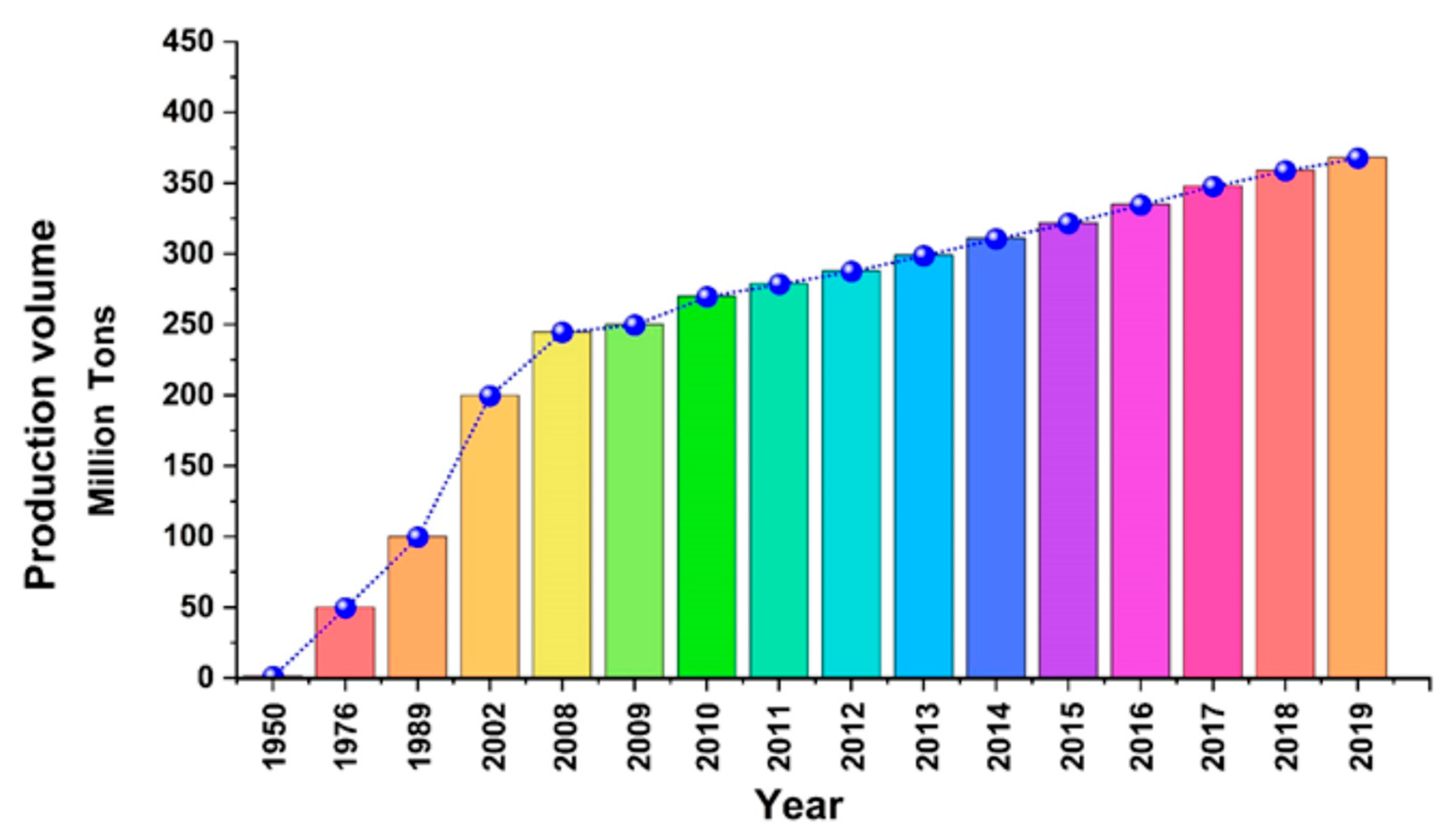

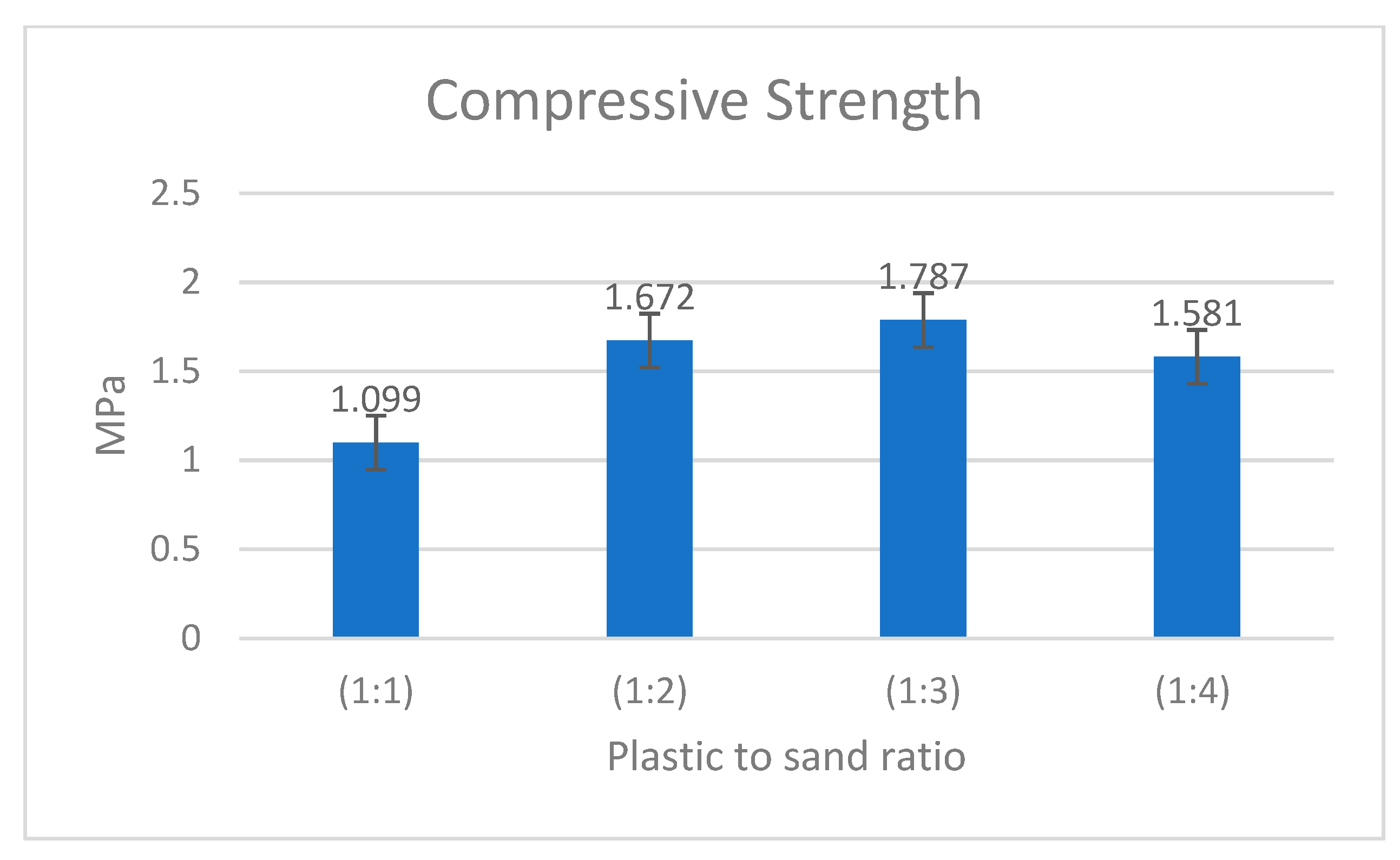
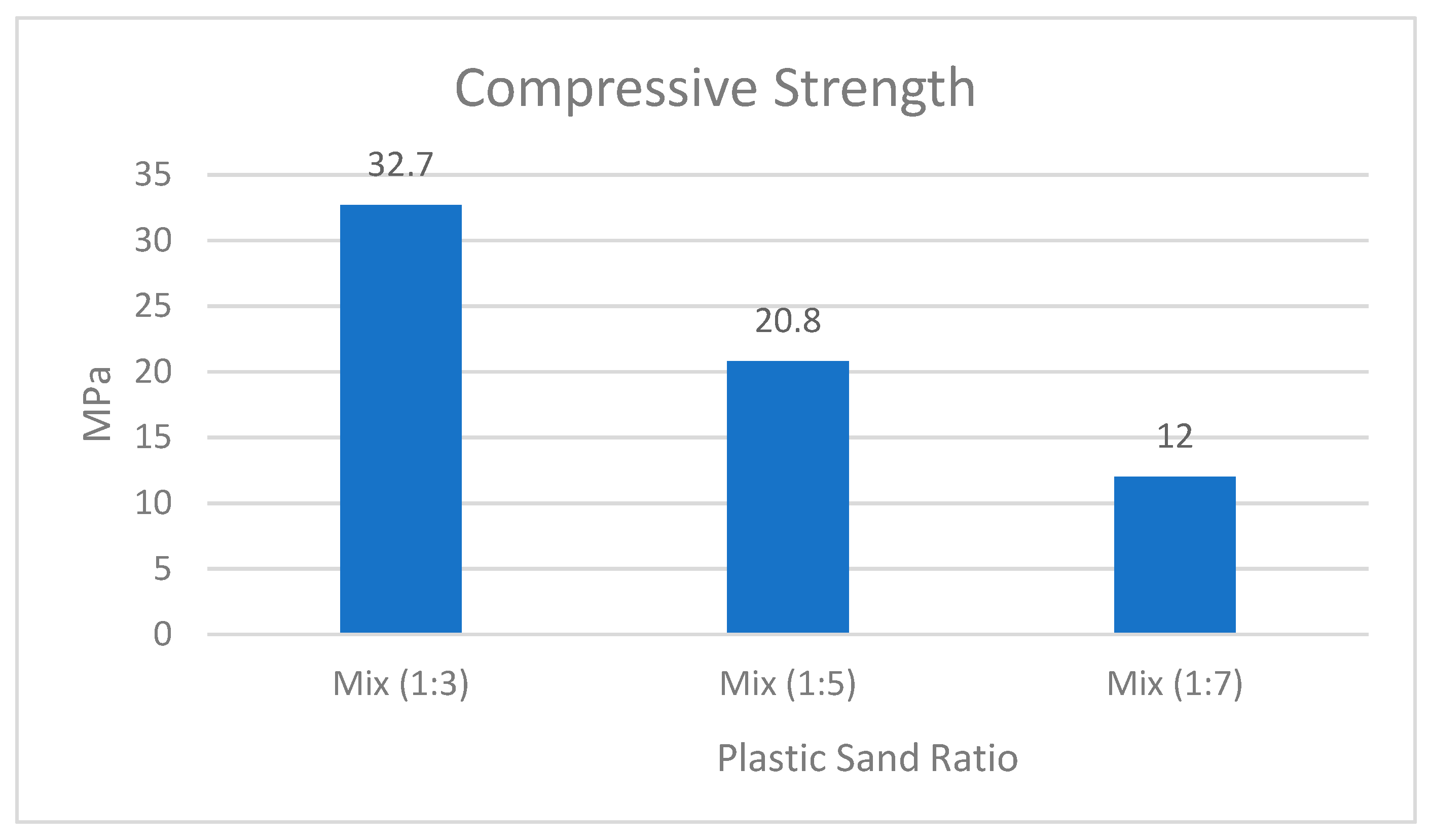
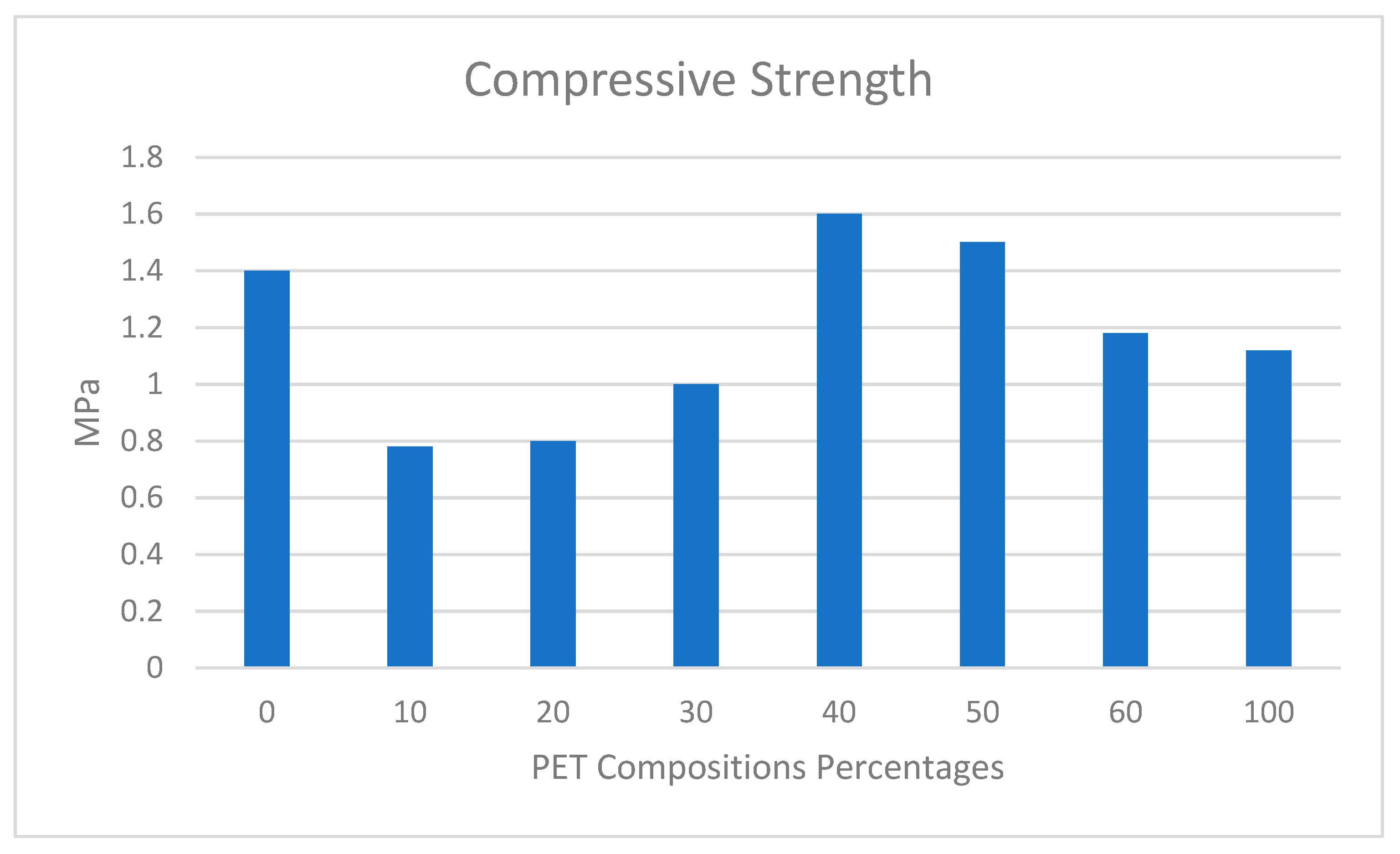
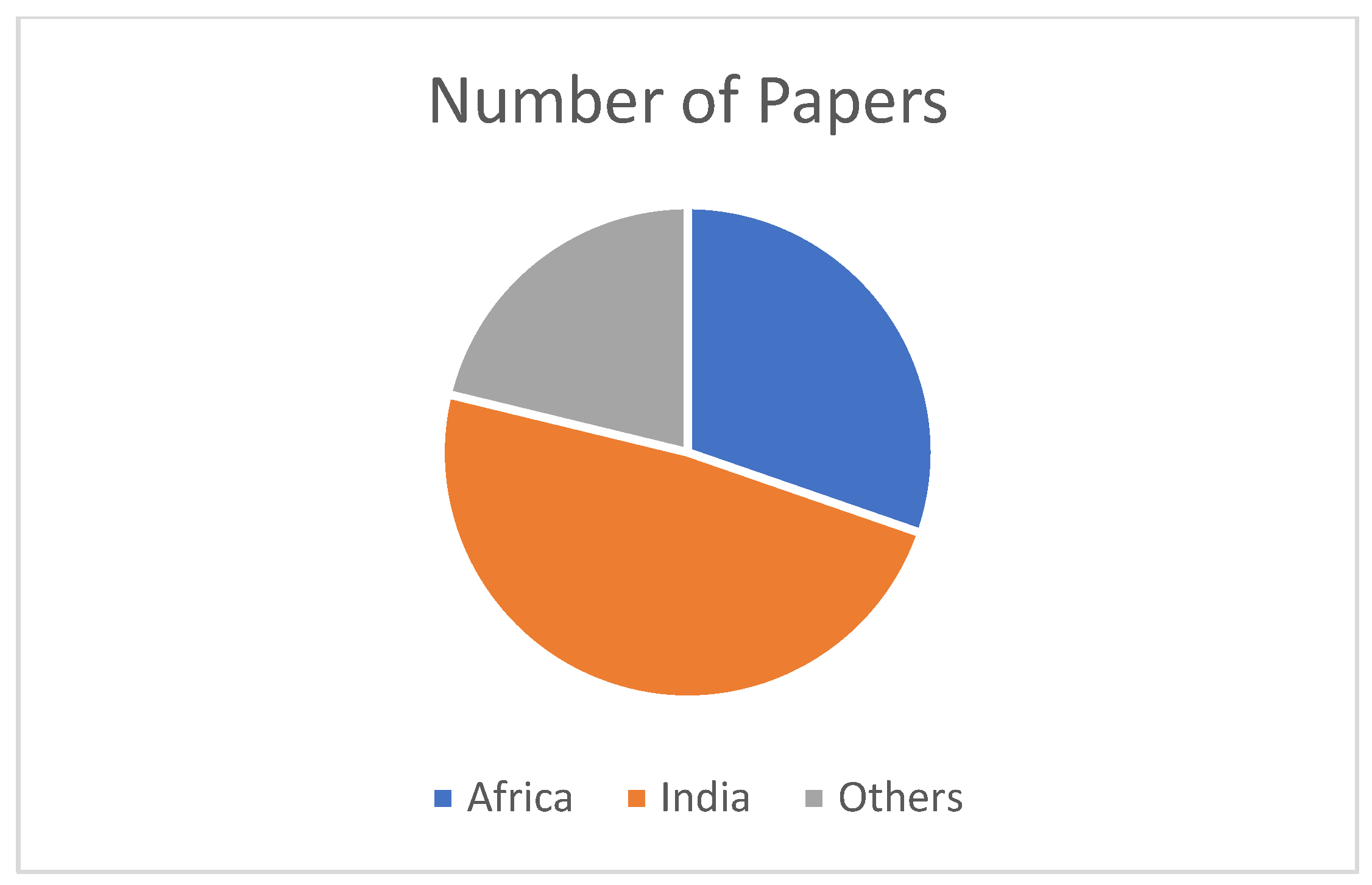
| Title | Review Scope |
|---|---|
| “Use of Recycled Plastics in Concrete: A Critical Review” [21] | Use of plastic in concrete mix |
| “Potential Use of Plastic Waste as Construction Materials: Recent Progress and Future Prospect” [22] | Use of plastic in construction material (general) |
| “Use of Recycled Plastic as Fine Aggregate in Cementitious Composites: A Review” [23] | Use of plastic as fine aggregate |
| “Engineering Properties of Concrete with Waste Recycled Plastic: A Review” [24] | Use of plastic in concrete |
| “Mortar and Concrete Composites with Recycled Plastic: A Review” [25] | Use of plastic in cement and concrete |
| “Use of Plastic Waste as Aggregate in Cement Mortar and Concrete Preparation: A Review” [26] | Use of plastic in cement and concrete |
| “Application of Plastic Wastes in Construction Materials: A Review Using the Concept of Life-Cycle Assessment in the Context of Recent Research for Future Perspectives” [27] | Use of plastic in construction material (general) |
| Plastic Type | Characteristics and Use/Construction Application |
|---|---|
| Polyethylene terephthalate (PET or PETE) | Strong, clear, hard, and absorbs very little water. Example of use: beverage bottles and food bottles. Can be utilized in different types of construction materials, concrete, unfired clay brick, soil-cement block, asphalt-concrete mixture, mortar. |
| Low-density polyethylene (LDPE) | Soft and flexible. Example of use: garbage bags. Can potentially be used in the production of blocks and bricks. |
| High-density polyethylene (HDPE) | White or colored, withstands high temperatures, has a high strength-to-density ratio. Examples of use: buckets and detergent bottles. Can be used in the manufacturing of tables, plastic lumber, chairs, and other furniture. |
| Polyvinyl chloride (PVC) | Rigid, hard, clear, extremely good tensile strength, and very dense. Examples of use: plumbing pipes and fittings. Can be used as an aggregate/gravel in cement-based materials. |
| Polypropylene (PP) | Hard, flexible, non-toxic, transparent, resistant to different chemicals, and withstands high temperatures. Examples of use: lunch boxes and potato chip bags. Can be utilized as aggregates/gravel in asphalt mixtures. |
| Polystyrene (PS) | Transparent, relatively hard, lightweight, and colorless. Examples of use: toys and disposable plastic cutlery and dinnerware. Can be used as insulation materials (parts that are not highly stressed mechanically). |
| Polyester (PE) | Stable, strong, lightweight, shock absorbing, highly thermally efficient, energy absorbing, and resistant to most chemicals. Examples of use: safety belts and fabrics for conveyor belts. |
| Title | Year | Type of Material | Scope of Study |
|---|---|---|---|
| “Plastic Wastes, Glass Bottles, and Paper: Eco-Building Materials for Making Sand Bricks” [33] | 2020 | PET, LDPE, and HDPE | plastic sand bricks |
| “Experimental Study on Strength Behaviour of Plastic Sand Bricks” [11] | 2021 | PET, LDPE, and HDPE | plastic sand bricks |
| “Study of Sand-Plastic Composite Using Optimal Mixture Design of Experiments for Best Compressive Strength” [40] | 2021 | LDPE and HDPE | plastic sand bricks |
| “Recycling Waste Plastic Bags as a Replacement for Cement in Production of Building Bricks and Concrete Blocks” [36] | 2020 | melted plastic bags | bricks and concrete blocks |
| |Utilization of Low-Density Polyethylene (LDPE) Plastic Wastes in the Production of Paving Tiles” [34] | 2020 | molten plastics | paving tiles |
| “The Effect of Composition of Plastic Waste Low Density Polyethylene (LDPE) with Sand to Pressure Strength and Density of Sand/LDPE Composite” [41] | 2019 | LDPE | plastic sand bricks |
| “Recycling High-Density Polyethylene (HDPE) into Construction Materials as a Key Step in Plastic Waste Reduction” [2] | 2018 | HDPE | pavers |
| “Comparative Study on Conventional HDPE Paver Blocks with M-Sand and Bagasse Ash as Constituent Materials” [42] | 2021 | HDPE | paver blocks |
| “An Experimental Study on Brick Manufactured Using M-Sand, Sawdust, and Recycled Plastic” [43] | 2019 | PP | plastic sand bricks |
| “Fabrication and Testing of Plastic Sand Bricks” [44] | 2019 | PET | plastic sand bricks |
| “Experimental Study on the Use of waste Polyethylene Terephthalate (PET) and River Sand in Roof Tile Production” [45] | 2019 | PET | roof tiles |
| “Manufacture of Tiles Using Waste Plastic and River Sand” [46] | 2019 | PET | roof tiles |
| “Effect of Waste PET on the Structural Properties of Burnt Bricks” [47] | 2020 | PET | burnt bricks |
| “Manufacturing of Bricks from HDPE and PP Plastic” [48] | 2020 | HDPE and PP | plastic sand bricks |
| Plastic: Sand Ratio | Maximum Load (KN) | Compressive Strength N/mm2 | Water Absorption |
|---|---|---|---|
| 1:2 | 232 | 9.17 Mpa | 0.346% |
| 1:3 | 162 | 6.4 Mpa | 1.57% |
| 1:4 | 88 | 3.5 Mpa | 1.467% |
| Plastic:Sand | Bending Moment N·m | Bending Stress N·m−2 | Thermal Conductivity W/m·k |
|---|---|---|---|
| 2:1 | 1711.25 | 10.26 | 1.43 × 10−3 |
| 1:1 | 721.55 | 4.32 | 1.53 × 10−3 |
| 1:2 | 540 | 3.24 | 1.71 × 10−3 |
| Plastic:Sand Ratio | Compressive Strength MPa | Compressive Strength (after Heat Exposure) MPa |
|---|---|---|
| 1:3 | 21.73 | 17.79 |
| 1:4 | 26.15 | 22.37 |
| 1:5 | 4.79 | 3.52 |
| Plastic:Sand Ratio | Maximum Load (KN) | Compressive Strength (kg/cm2) |
|---|---|---|
| 1:2 | 500 | 193.87 (19.01 MPa) |
| 1:3 | 350 | 135.71 (13.31 MPa) |
| 1:4 | 165 | 63.97 (6.27 MPa) |
| HDPE:PP Ratio | Compressive Load (KN) | Compressive Strength MPa | Water Absorption % |
|---|---|---|---|
| 50:50% | 157 | 7.5 | 0.44 |
| 40:60% | 97 | 4.64 | 0.25 |
| 70:30% | 128 | 6.12 | 0.23 |
| Reference No. | Country | Number |
|---|---|---|
| [10] | Algeria | 1 |
| [11,12,13,15,16,17,18,42,43,44,48,50,51,52,53,54] | India | 16 |
| [33] | Philippines | 1 |
| [40,46] | Ethiopia | 2 |
| [36] | Egypt | 1 |
| [5,34,45,47] | Nigeria | 4 |
| [41] | Indonesia | 1 |
| [18] | Paraguay | 1 |
| [55] | Poland | 1 |
| [2] | Rwanda | 1 |
| [37] | Malaysia | 1 |
| [56] | Colombia | 1 |
| [7] | Iraq | 1 |
| [57] | South Africa | 1 |
Publisher’s Note: MDPI stays neutral with regard to jurisdictional claims in published maps and institutional affiliations. |
© 2022 by the authors. Licensee MDPI, Basel, Switzerland. This article is an open access article distributed under the terms and conditions of the Creative Commons Attribution (CC BY) license (https://creativecommons.org/licenses/by/4.0/).
Share and Cite
Al-Sinan, M.A.; Bubshait, A.A. Using Plastic Sand as a Construction Material toward a Circular Economy: A Review. Sustainability 2022, 14, 6446. https://doi.org/10.3390/su14116446
Al-Sinan MA, Bubshait AA. Using Plastic Sand as a Construction Material toward a Circular Economy: A Review. Sustainability. 2022; 14(11):6446. https://doi.org/10.3390/su14116446
Chicago/Turabian StyleAl-Sinan, Mazen A., and Abdulaziz A. Bubshait. 2022. "Using Plastic Sand as a Construction Material toward a Circular Economy: A Review" Sustainability 14, no. 11: 6446. https://doi.org/10.3390/su14116446
APA StyleAl-Sinan, M. A., & Bubshait, A. A. (2022). Using Plastic Sand as a Construction Material toward a Circular Economy: A Review. Sustainability, 14(11), 6446. https://doi.org/10.3390/su14116446







